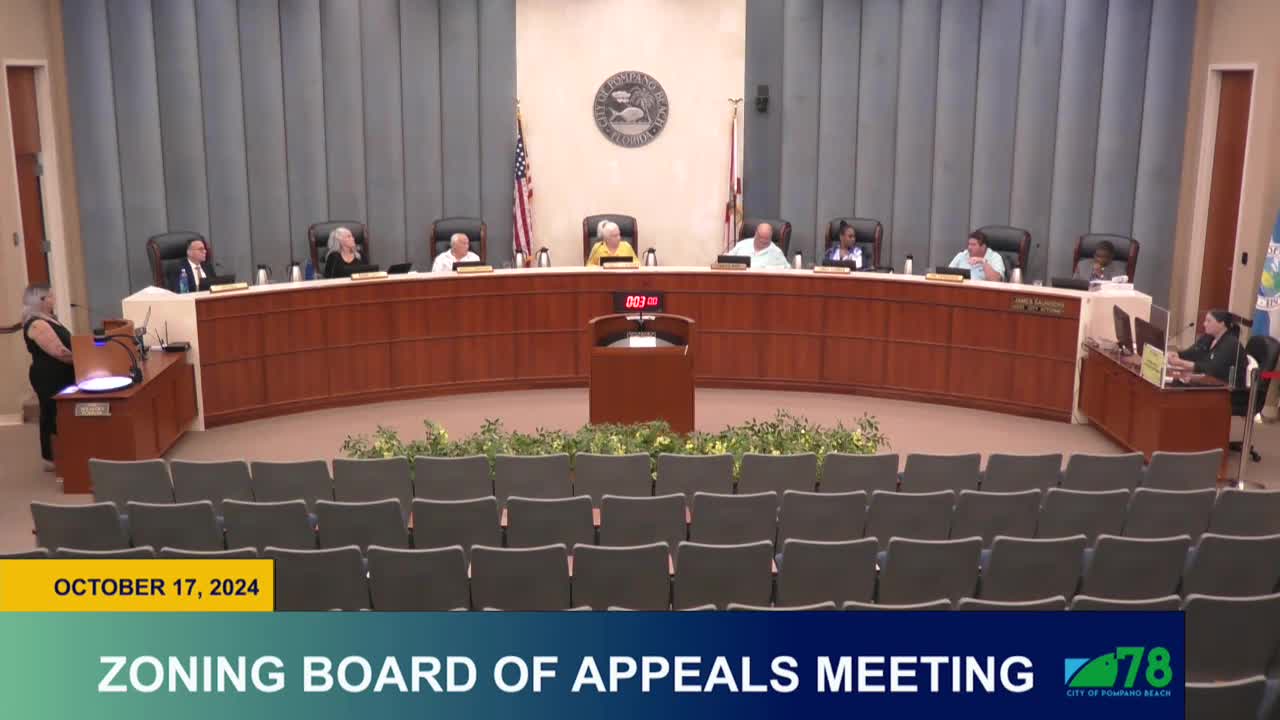Community residence proposal sparks debate over zoning limits
October 17, 2024 | Pompano Beach, Broward County, Florida
This article was created by AI summarizing key points discussed. AI makes mistakes, so for full details and context, please refer to the video of the full meeting. Please report any errors so we can fix them. Report an error »

In a recent government meeting, discussions centered around the approval process for a community residence aimed at housing individuals in recovery. The proposal initially seeks to accommodate up to 10 residents in a large home, with plans to eventually increase that number to 17. However, the immediate focus is on securing approval for the lower figure, as the Zoning Board of Appeals permits a maximum of 10 residents under current regulations.
The applicant emphasized the therapeutic benefits of having roommates, arguing that shared living arrangements can help prevent isolation among residents. While the goal is to eventually house 17 individuals, the applicant acknowledged that this would require a separate application and public hearing process, which would allow for community input and scrutiny.
City officials clarified that the current application is strictly for the approval of 10 residents, and any future increase would necessitate demonstrating a compelling need for additional capacity. This would involve a thorough review process, including considerations of the facility's compliance with state regulations regarding space and occupancy.
Concerns were raised about parking requirements, given the potential for high occupancy. Officials noted that while there is no strict limit on the number of vehicles based on the size of the house, parking availability would depend on the size of the driveway and the number of residents who own vehicles. The applicant indicated that many residents may not have cars, relying instead on public transportation.
The meeting also addressed the residential zoning of the property, clarifying that the conversion to a community residence does not change its residential status. This distinction is crucial, as exceeding the 10-resident cap could shift the facility's classification to a more commercial or institutional use, which would not be suitable for a residential neighborhood.
Overall, the meeting highlighted the complexities involved in establishing community residences, balancing the needs of individuals in recovery with community concerns and regulatory requirements. The board's decision on the initial application for 10 residents is pending, with further discussions anticipated as the process unfolds.
The applicant emphasized the therapeutic benefits of having roommates, arguing that shared living arrangements can help prevent isolation among residents. While the goal is to eventually house 17 individuals, the applicant acknowledged that this would require a separate application and public hearing process, which would allow for community input and scrutiny.
City officials clarified that the current application is strictly for the approval of 10 residents, and any future increase would necessitate demonstrating a compelling need for additional capacity. This would involve a thorough review process, including considerations of the facility's compliance with state regulations regarding space and occupancy.
Concerns were raised about parking requirements, given the potential for high occupancy. Officials noted that while there is no strict limit on the number of vehicles based on the size of the house, parking availability would depend on the size of the driveway and the number of residents who own vehicles. The applicant indicated that many residents may not have cars, relying instead on public transportation.
The meeting also addressed the residential zoning of the property, clarifying that the conversion to a community residence does not change its residential status. This distinction is crucial, as exceeding the 10-resident cap could shift the facility's classification to a more commercial or institutional use, which would not be suitable for a residential neighborhood.
Overall, the meeting highlighted the complexities involved in establishing community residences, balancing the needs of individuals in recovery with community concerns and regulatory requirements. The board's decision on the initial application for 10 residents is pending, with further discussions anticipated as the process unfolds.
View full meeting
This article is based on a recent meeting—watch the full video and explore the complete transcript for deeper insights into the discussion.
View full meeting